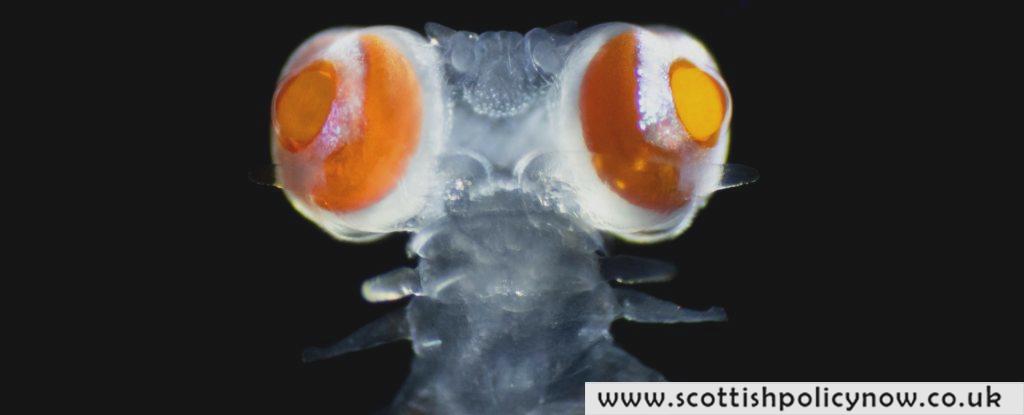There are some truly unusual eyeballs in the animal kingdom, but a type of marine worm is really making scientists scratch their heads.
They’re known as alciopid polychaete worms, and their eyes are astonishingly large. Together, the eyes weigh 20 times more than the rest of the animal’s head; for humans, that would be like having eyes that weigh around 50 kilograms (110 pounds) each.
Scientists have been aware of these massive eyes for some time; the real question was what these worms actually see with them.

“We set out to solve the mystery of why a nearly invisible, transparent worm that feeds at night has developed such huge eyes,” says marine biologist Michael Bok from Lund University in Sweden. “Our primary goal was to discover if having large eyes provides the worm with enhanced vision.”
Their research involved a comprehensive study of the vision of three nocturnal marine worm species from the Mediterranean: Torrea candida, Vanadis cf. formosa, and Naiades cantrainii, each featuring a sizable pair of bulbous eyes.
The team conducted optical, morphological, and electrophysiological examinations of these animals’ eyes in minute detail. The findings showed that the Alciopidae family of polychaete worms, which includes all three species, can see small or distant objects and follow their movements.
Previously, only vertebrates, arthropods, and cephalopods were known to possess object vision, making this discovery quite extraordinary. Most other polychaete worms possess only basic, low-resolution vision or directional photoreception that detects light presence and direction.
“This is the first instance such sophisticated and detailed vision has been observed outside these groups,” notes neuro and marine biologist Anders Garm from the University of Copenhagen.
“In fact, our studies indicate that the worm’s vision is comparable to that of mice or rats, despite it being a relatively simple organism with a tiny brain.”
It remains unclear why a creature that is active on the ocean floor at night requires such sharp vision. Yet, it appears necessary; while the worm’s body is transparent enough to camouflage itself, its eyes must stay opaque enough to gather light. This suggests the eyes offer a significant advantage that outweighs the risk of being spotted by predators.
The exact nature of this benefit is still unknown. However, research from nearly 50 years ago provides a hint. In 1977, it was discovered that these worms’ eyes are most sensitive to ultraviolet wavelengths. This indicates that there might be aspects of nocturnal marine life we haven’t yet discovered.
“We theorize that the worms might be bioluminescent and use light to communicate among themselves. If they used normal blue or green light, they’d attract predators. But by using UV light, they could remain unseen by other animals except their own kind. Our guess is that they have evolved precise UV vision to facilitate a secret mating language,” Garm elaborates.
“It’s possible they’re also scouting for UV bioluminescent prey. Regardless, it’s incredibly exciting as UV bioluminescence hasn’t been documented in other animals. We hope to eventually confirm this as a first.”
This research was recently featured in Current Biology.








